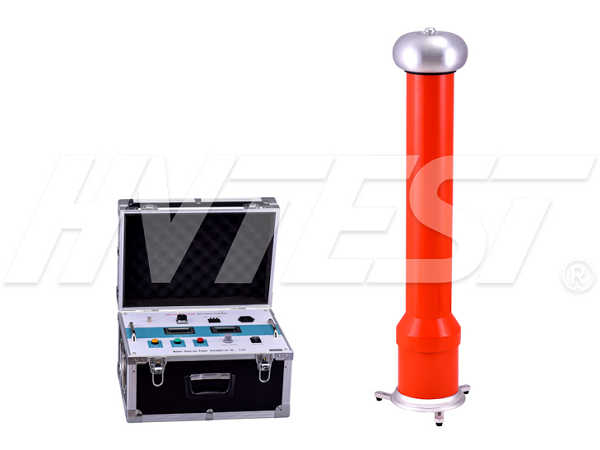Detection Technology
Operation steps of DC high voltage generator
Huatian Power specializes in the production of DC high-voltage generators. Next, what are the specific operation steps of the DC high-voltage generator? If the capacitive load is tested, it must be connected to a high-current resistance.
1. The integrity of the instrument should be checked before use, the connecting cables and short circuits should not be damaged, and the equipment should not be broken or damaged.
2. Place the cabinet and the voltage multiplier cylinder at the appropriate position, and connect the power cord, cable and grounding wire respectively. The grounding wires of the protective grounding wire and the working grounding wire, as well as the grounding wire of the discharge rod, should be connected to the grounding wire of the sample (that is, one-point grounding). Mutual contact is strictly prohibited. For this reason, DHV dedicated ground wire should be used.

3. Place the power switch in the off position and check that the potentiometer of the voltage regulator should be at zero. Overvoltage protection
The set value is generally 1.1 times the test voltage.
Fourth, the no-load boost verification is sensitive to the overvoltage protection setting.
5. When the red light is on, turn on the power switch to indicate that the power is on.
6. Press the green button and the green light, which means high voltage.
7. Adjust the voltage regulator in a clockwise direction. The output terminal starts from zero and rises to the required voltage. Record the meter readings according to the specified time. Check the control box and high-voltage output line for abnormal phenomena and sounds.
8. Lower the voltage to zero the voltage regulator, then press the red button to cut off the high voltage and turn off the power switch.
9. The samples were tested for leakage and DC voltage resistance. After checking and confirming that the tester has no abnormal state, the leakage and DC voltage test of the test can be started. Connect the sample, grounding wire, etc., and turn on the power after checking.
10. Increase to the required voltage or current. The boost speed is suitable for the test voltage of 3~5kV per second. During the large-capacitance test, the charging current of the ammeter must also be monitored, which does not exceed the maximum charging current of the tester. For small-capacity samples, such as zinc oxide arresters, magnetic arresters, etc., first increase to 95% of the required voltage (current), and then slowly and carefully increase to the required voltage (current). Then read the voltage (current) value from the digital meter. If the zinc oxide arrester needs to measure 0.75 udc-1 mA, the voltage first rises to the udc1ma value, and then press the yellow button, the voltage drops to 75% of the original, and keep this state. The current can be read at this time. After the measurement, the regulator returns to zero counterclockwise, and then press the green button. When you need to raise again, press the green button.
If necessary, use an external high voltage divider to compare the voltage on the control box.
11. After the test is completed, the voltage drops and the power is cut off.
Measuring method of DC resistance tester | 2020/8/10 | reading802time How to choose a ground resistance tester | 2020/8/9 | reading897time return

